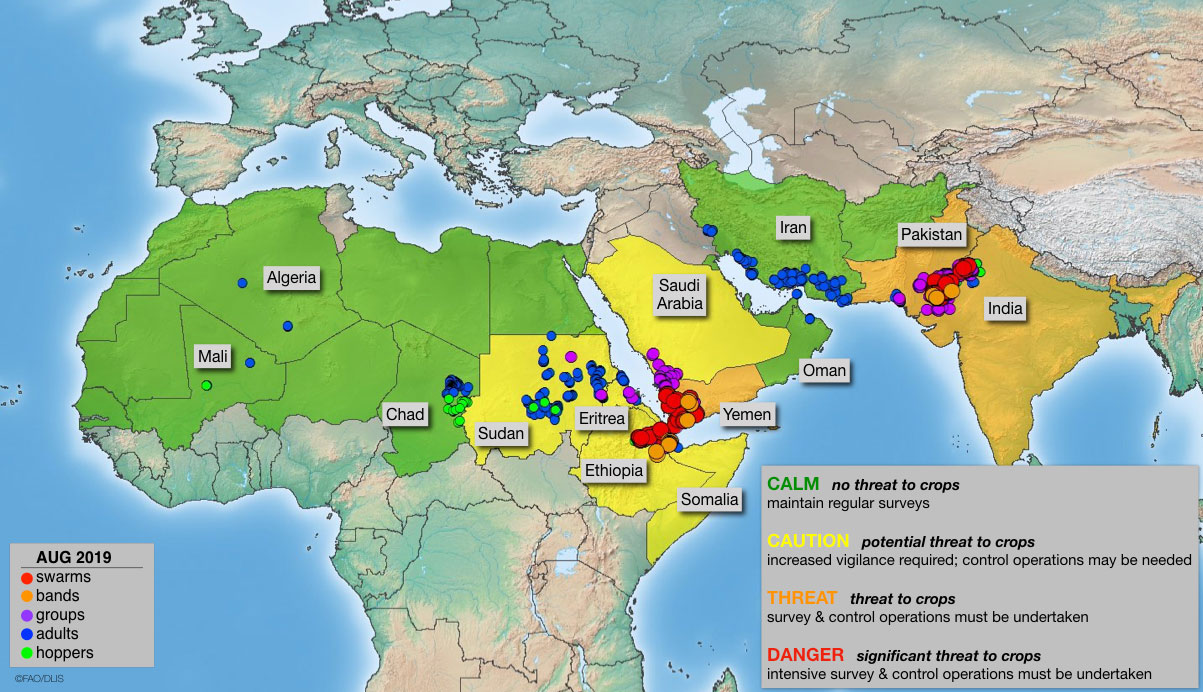From the U.N.'s FAO Locust Watch:
Desert Locust situation update 13 September 2019
Serious situation persists in eastern and central regions
The current Desert Locust situation remains serious and worrisome in the Eastern and Central regions where good rains continue to fall and breeding is causing locust numbers to increase further.....MORE
In the Eastern Region, ground control operations are in progress along both sides of the Indo-Pakistan border against a second generation of breeding. So far this month, Pakistan has treated 9 200 ha of hopper and adult groups in Cholistan, Nara and Tharparkar deserts while India has treated 7 500 ha of hopper and adult groups as well as immature and mature swarms in West Rajasthan. Breeding is expected to continue in both countries through October.
In the Central Region, hoppers bands are present in the interior of Yemen south and east of Marib. More importantly, good rains have been falling in the winter breeding areas along the Red Sea coast since early August, which have caused ecological conditions to become favourable for breeding several months earlier than normal in Yemen, southwest Saudi Arabia and Eritrea. By early September, hatching had commenced, and hoppers are forming bands in Yemen and groups in Saudi Arabia and Eritrea. In addition, scattered adults appeared recently further north along the coast of Saudi Arabia near Lith. Saudi Arabia treated 900 ha and Eritrea 53 ha so far this month. Prevailing insecurity continues to restrict survey and control operations in Yemen....
